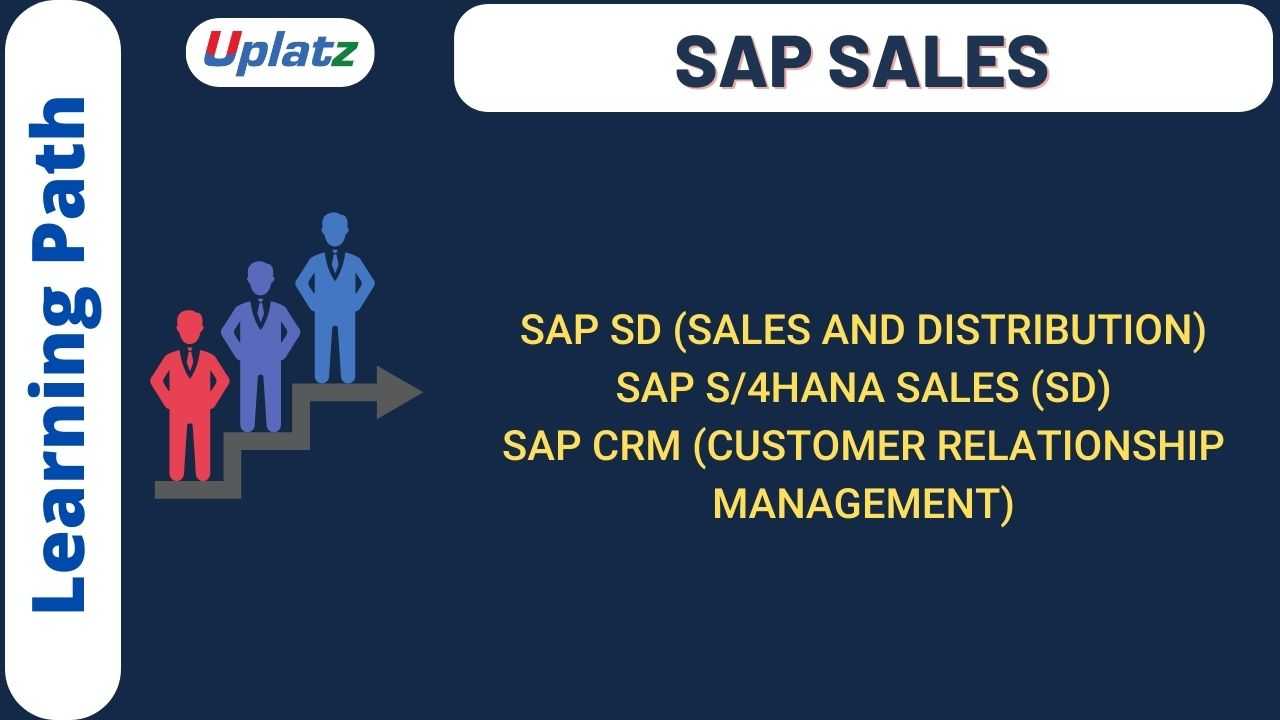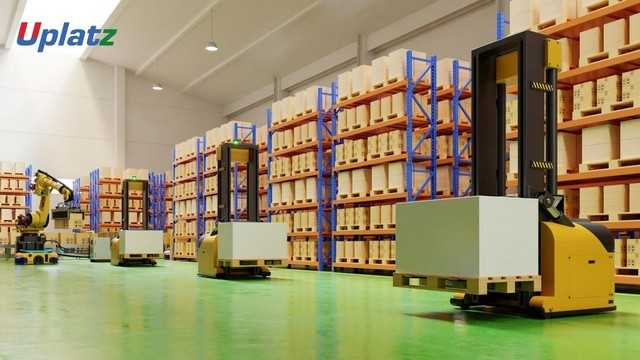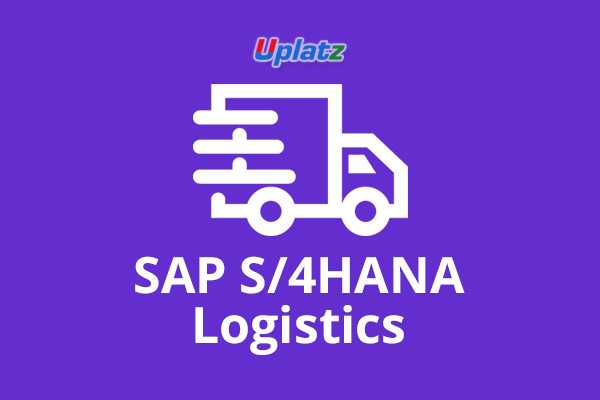SAP SD (comprehensive)
Learn about Sales and Distribution module & about Master Data, Sales, Shipping of Material, Sales support, Transportation of products, Foreign Trade.Preview SAP SD (comprehensive) course
View Course Curriculum Price Match Guarantee Full Lifetime Access Access on any Device Technical Support Secure Checkout Course Completion Certificate 54% Started a new career
BUY THIS COURSE (
54% Started a new career
BUY THIS COURSE (GBP 12 GBP 29 )-
 72% Got a pay increase and promotion
72% Got a pay increase and promotion
Students also bought -
-

- Learning Path - SAP Sales
- 100 Hours
- GBP 29
- 466 Learners
-

- SAP S/4HANA EWM 1909
- 36 Hours
- GBP 12
- 247 Learners
-

- SAP S/4HANA Logistics
- 32 Hours
- GBP 12
- 1643 Learners

SAP SD, or Sales and Distribution, is a module within the SAP ERP system that manages sales, shipping, and billing processes. It encompasses various business processes such as quotation creation, sales order processing, delivery, billing, and customer management. The key functionalities of SAP SD module are:
1) Master Data Management: This includes maintaining customer master data, material master data, and pricing conditions.
2) Sales Order Processing: Creation, modification, and tracking of sales orders. It involves functionalities like order entry, availability check, credit management, and pricing.
3) Delivery Processing: This involves creating delivery documents, picking, packing, and shipping the products to customers. It ensures efficient handling of goods and tracks their movement.
4) Billing: Invoicing customers for the products or services delivered. Billing involves determining prices, taxes, discounts, and generating invoices.
5) Credit Management: Evaluating the creditworthiness of customers and managing credit limits to prevent potential losses due to bad debts.
6) Output Determination: Determining the form and content of documents such as sales orders, delivery notes, and invoices.
7) Revenue Recognition: Managing revenue recognition processes based on accounting principles and ensuring compliance with regulations.
8) Returns Management: Handling product returns, including return order processing, goods receipt, and credit processing.
9) Integration with other SAP modules: SD module integrates closely with other SAP modules like MM (Materials Management), PP (Production Planning), FI (Financial Accounting), and CO (Controlling) for seamless business processes.
10) Reporting and Analytics: Providing various reports and analytics tools to analyze sales performance, customer trends, and profitability.
SAP SD plays a crucial role in streamlining the sales process, improving customer service, and optimizing inventory management for businesses using SAP ERP systems. An SAP SD consultant is responsible for analyzing complex business process requirements and providing corresponding system solutions. Moreover, they are in charge of identifying and interpreting customer specifications. The important components in SAP Sales and Distribution module are Master Data, Sales, Shipping of Material, Billing-Related, Sales support, Transportation of products, Foreign Trade.
SAP SD training by Uplatz covers majorly all the tasks involved in the SD process. By going through the SAP SD training, the candidates will learn how to handle pre-sales activities, sales order, distribution of shipments, billing process, and generating customer invoice. This includes all the activities including user transactions, customization, user exits, pricing etc.
SAP SD (comprehensive) course by Uplatz is the most substantial module of SAP ERP. This course helps in storing the customer and product data of a business. SAP SD manages the shipping, billing, selling, and transportation of products and services of an group. The SAP SD module achieves customer relationship starting from raising a quotation to sales order and billing of the product or service. This module is closely combined with other modules like SAP Material Management and PP. Introductory coaching that covers the fundamentals of SAP SD and how to deal with its various modules and sub-modules. This SAP SD course covers the following topics:
a) Introduction to SAP ERP and getting started with SAP SD (Sales and Distribution) module
b) Storing the customer and product data of an organization
c) SAP SD manages the shipping, billing. Managing selling and transportation of products and services
d) SAP SD module manages customer relationship for raising a quotation to sales order and billing of the product or service.
In this tutorial you can easily understand the concepts explained here with a basic knowledge of how an organization deals with their customers and products. At the end of the course you will receive a course completion certificate issued by Uplatz.
Course/Topic - SAP SD (comprehensive) - all lectures
-
In this first lecture session of SAP Basic Introduction we give you a basic overview of SAP BASIC and also cover basic functions of SAP.
-
In this lecture session of SAP BASIC system landscape & architecture we learn about landscape & architecture of SAP.
-
In this lecture session of SAP we learn about sales and distribution and also cover overview sales and distribution.
-
In this lecture session of SAP we learn about enterprise structure and configuration.
-
In this lecture session of SAP we talk about basic structure configuration of SAP and also cover Basic function of structure configuration.
-
In This lecture session of SAP we learn about assignment of enterprise structure and also cover basic assignment of SAP.
-
In this lecture session we learn about master data and also cover customer master data.
-
In this lecture session we talk about customer master data and also cover basic differences between master data and customer data.
-
In this lecture session we learn about customer master data config and also cover how we manage the customer data in records.
-
In this lecture session we talk about material master data record and also cover how we make the master data records.
-
In this lecture session we learn about customer material info records and also cover basic overview of customer data records.
-
In this lecture session we learn about sales document processing and also cover basic data sales documents processing.
-
In this lecture session of SAP we talk about how we make item category configuration and assignment.
-
In this lecture session we learn about how we schedule lines and categories.
-
In this lecture session we learn about pricing configuration with condition techniques and also cover all basic techniques of SAP.
-
In this lecture session of SAP pricing configuration with condition record of master data.
-
In this lecture session of SAP we talk about free goods and also cover free goods and record the goods.
-
In this lecture session we learn about material determination and also cover basic material data and determination.
-
In this lecture session we talk about material listing & exclusion and also cover basic listing of SAP.
-
In this lecture session we talk about revenue account determination and also cover revenue account and records of accounts.
-
In this lecture session of SAP of special sales order and record all the special sales of SAP.
-
In this lecture session we talk about agreement contracts and customer complaints and also cover contracts and customer master data.
-
In this lecture session we talk about shipping delivery picking delivery billing and also cover picking delivery the data.
-
In this lecture session we talk about copying control and also learn how we control our copying techniques in SAP.
-
In this lecture session we learn about incompletion procedures and third party sales order and also talk about what is third party sales.
-
In this lecture session we learn about cross selling and consignment sales order and also talk about cross selling in third party sales order.
-
In this lecture session we talk about Project Orientation Training & Implementation Process Flow & Support Process Flow and also talk about basic process flows.
1. Learn Credit Management
2. Learn How Returnables Processing
3. Learn Cross-Company Sales Order Processing
4. Learn Sales Order Processing with Customer Down Payment
5. Learn Sales Third-Party Process with Subcontracting
6. Learn Sales: Period End Closing Operations
7. Learn Credit Memo Processing
8. Learn Sales Order Processing with Collective Billing
9. Learn how to deal with returns and complaints
10. Learn Advanced Customer Returns Management
11. Learn Foreign Trade Export Processing
-
SAP Basic Introduction
-
SAP System Landscape & Architecture
-
Enterprise Structure Configuration
-
Assignment of Enterprise Structure
-
Master Data (Customer Master data Configuration)
-
Customer Master (Setup Partner determination)
-
Customer Master Data Configuration
-
Material Master Record
-
Customer Material Info Record (CMIR)
-
Sales Document Processing
-
Item Category Configuration & Assignment
-
Schedule Line Category Configuration & Assignment
-
Pricing Configuration with Condition Techniques
-
Pricing Configuration with Condition Record
-
Free Goods
-
Material Determination
-
Material Listing & Exclusion
-
Revenue Account Determination
-
Special Sales Order
-
Agreement & Contracts
-
Customer Complaints
-
Shipping Point Determination
-
Shipping & Delivery Creation & Configuration
-
Picking , Packing & PGI Process
-
Billing Creation & Configuration
-
Copying Controls
-
Incompletion Procedures
-
Third Party Sales Order
-
Cross Selling
-
Consignment Sales Order
-
Project Orientation Training
-
Implementation Process Flow
-
Support Process Flow
The SAP SD (comprehensive) Certification ensures you know planning, production and measurement techniques needed to stand out from the competition.
SAP Sales and Distribution (SAP SD) is a core functional module in SAP ERP Central Component (ECC) that allows organizations to store and manage customer- and product-related data. Organizations use this data to manage all of the sales ordering, shipping, billing, and invoicing of their goods and services.
SAP SD (Sales and Distribution) is one of the significant modules of SAP ERP. It is used to store the customer and product data of an organization. SAP SD helps to manage the shipping, billing, selling and transportation of products and services of a company.
SAP SD certification and live training of real world scenarios, A SAP SD consultant proves to be the key figure in the development of specifications and requirements; implementation of product order to delivery chain processes; controlling of complicated sales/business processes and all activities linked to order.
Uplatz online training guarantees the participants to successfully go through the SAP SD (comprehensive) Certification provided by Uplatz. Uplatz provides appropriate teaching and expertise training to equip the participants for implementing the learnt concepts in an organization.
Course Completion Certificate will be awarded by Uplatz upon successful completion of the SAP SD (comprehensive) online course.
The SAP SD (comprehensive) draws an average salary of $104,000 per year depending on their knowledge and hands-on experience.
SAP Sales and Distribution (SAP SD) is a core functional module in SAP ERP Central Component (ECC) that allows organizations to store and manage customer- and product-related data. Organizations use this data to manage all of the sales ordering, shipping, billing, and invoicing of their goods and services.
Note that salaries are generally higher at large companies rather than small ones. Your salary will also differ based on the market you work in.
a).SAP EWM /embedded EWM.
b).SAP SD Consultant.
c).Associate Consultant.
Q1).What is SAP SD? What are the primary functions of Sales and Distribution?
Ans-SAP SD handles all the processes of order to delivery. It executes the business processes used in selling, shipping and billing of product and services.
- a).Inquiries & Quotes
- b).Sales Orders
- c).Sales Return
- d).Consignment
- e).Contract & Scheduling Agreements
- f).Credit & Debit Memo requests
- g).Rush Orders & Cash Sales
- h).Back Orders
Q2).What is the organizational structure in sales and distribution?
Ans-The organizational structure in sales and distribution is.
- a).Sales Organization
- b).Distribution Channel
- c).Division
- d).Sales Office
- c).Sales Groupb
Q3) Explain what is the difference between milestone and periodic billing?
Ans-
- a).Periodic: Full amount in each bill till contract period
- b).Milestone: Partial amount in each bill till full amount is billed
Q4). Explain how shipping point is determined?
Ans-Shipping point is determined by,
Shipping Conditions + Loading Group + Delivery Plant = Shipping Point.
Q5).Explain how you can assign distribution channel to Sales Organization?
Ans-To assign distribution to sales organization in SAP, you have to follow the path.
SPRO (SAP Project Reference Object) >IMG >Enterprise structure >Assignment > Sales and Distribution > Assign distribution channel to sales organization.
Q6).Mention what are the Sales Document types in SAP? What is the configuration step to define sales document type in SAP SD?
Ans-The Sales Document types available in SAP are.
- a).Credit Memo Request
- b).Debit Memo Request
- c).Standard Order
- d).Returns, etc.
Configuration steps for SAP SD
IMG Menu Path: SPRO > IMG > Sales and Distribution > Sales > Sales Documents > Sales Document Header > Define Sales Document Type.
Q7).Explain what is condition types? What is the path to define condition type in SAP for pricing?
Ans-The representation of certain aspects related to your daily pricing activities is referred as condition types.
The path for condition type for pricing is.
SAP IMG path: SPRO > SAP Reference IMG > Sales and Distribution > Basic Functions > Pricing > Pricing Control > Define Condition Types.
Q8).Mention what is the Reversal PGI? Can you cancel the PGI and mention the transaction code for PGI?
Ans-PGI or Post Good Issue is done to keep a record of available goods in stock after the goods are delivered. Good issue transaction cannot be cancelled but can be reversed.
The transaction t-code for reverse PGI is VL09. Partial quantity reversal is not possible, in the delivery document you cannot reverse the PGI for one item/ partial quantity.
Q9).Explain what is the difference between SAP credit memo request and SAP Credit Memo?
Ans-SAP Credit Memo (T-code VF01) is created on the basis of credit memo request (T-code: Va01). Credit memo request is generated when you have to pay to the customer. (Excess bill or damages or change in the price).
Q10).When would you use a SAP Return Order and SAP Credit Memo?
Ans-SAP Return Order is carried out when customer returns any previously purchased products and requires a credit or money back. While credit memo is when the customer is credited without returning any goods.
Q11).Explain what is SAP Posting Period? What is the transaction code to open and close posting period?
Ans-SAP posting period is to make sure that posting period for the business sales order is aligned with financial posting date, which means when financial accounting is ready for closing and proceed with the payment.
The transaction code to open and close posting period is S_alr_87003642
Q12).Explain what Copy control is and when Copy Control transition can be done? In what manner Copy Control transition can be done?
Ans-In SAP SD, the process of copying data from the source document to the target document is done by Copy Controls. They consist of program referred as routing that determines how the system will transfer the data. Copy control could be useful for the end users who don’t want to repeat the control parameters from order- to delivery- and then billing.
Copy control can be done in following manner:
- a).Sales document by sales document
- b).Billing document by sales document
- c).Sales document by delivery
- d).Sales document by billing document
- e).Delivery by billing document
Q13).What are the three levels that copy controls are set up? And what are the transaction codes through which it could be done?
Ans-At three levels of sales order copy controls are set up Header level, Item level and Schedule line level.
- a).VTAA: from sales order to sales order
- b).VTLA: from sales order to delivery
- c).VTAF: from the billing document to sales order
- d).VTFA: from sales order to billing document
- e).VTFL: from delivery to billing document
- f).VTFF: from the billing document to billing document
Q14).Explain how you can include condition type in the pricing procedure?
Ans-To include condition type in the pricing procedure, you have to follow the pathway
Basic Functions >Pricing >Pricing Control >Define and Assign pricing procedure and then select “ Maintain pricing procedures” after that select pricing procedure and then “Control Data” and add your condition type to the pricing system.
Q15).Explain what is Proforma Invoice and what are the types of it?
Ans-Proforma invoice is a reference doc for import and export negotiations. The standard proforma invoice doc types are
- a).With reference to order – F5
- b).With reference to delivery- F8
Q16).Mention the transaction code used to create a return delivery?
Ans-Transaction code is used to create a return delivery is T/C VA01 with standard order type RE, while return delivery is T/C VL01 with return delivery doctype LR
Q17).Mention what are the two places where you need to configure CIN (Country Version India)?
Ans-The two places where you have to configure CIN is Financial Accounting > Tax on sale and purchase, and other is Logistic General -> Tax on Goods Movement
Q18) Explain what is the difference between rush order and cash sales?
Ans-
- a).Rush Order: Order delivery will be done on the same day while billing will be done later
- b).Cash Sale: Billing and order delivery will be done on the same day
Q19).List out the five features you can control for the sale document type?
Ans-For sale document type the five features you can control is
- a).Text
- b).Partner
- c).Pricing
- d).Taxes
- e).Output
- f).Delivery
Q20). Mention what are the techniques available in delivery Scheduling?
Ans-The techniques available in delivery Scheduling are:
- a).Backward Scheduling: The system calculates requested delivery date
- b).Forward Scheduling: The system calculates the earliest possible date based on the material available date









